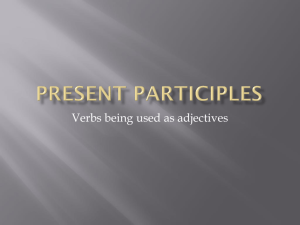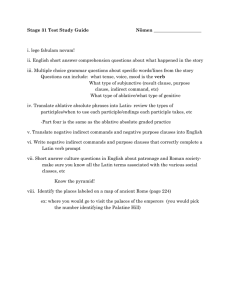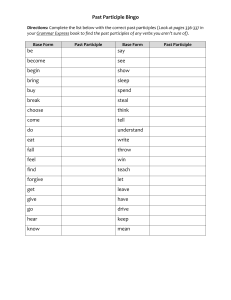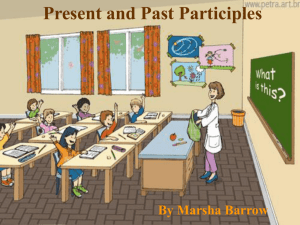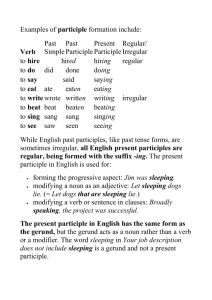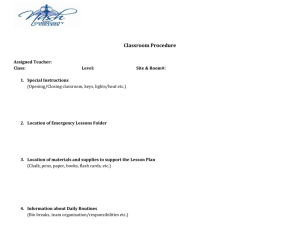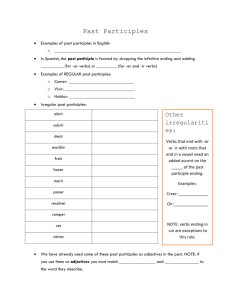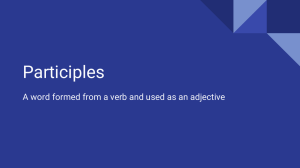Participles Formation Sheet
advertisement
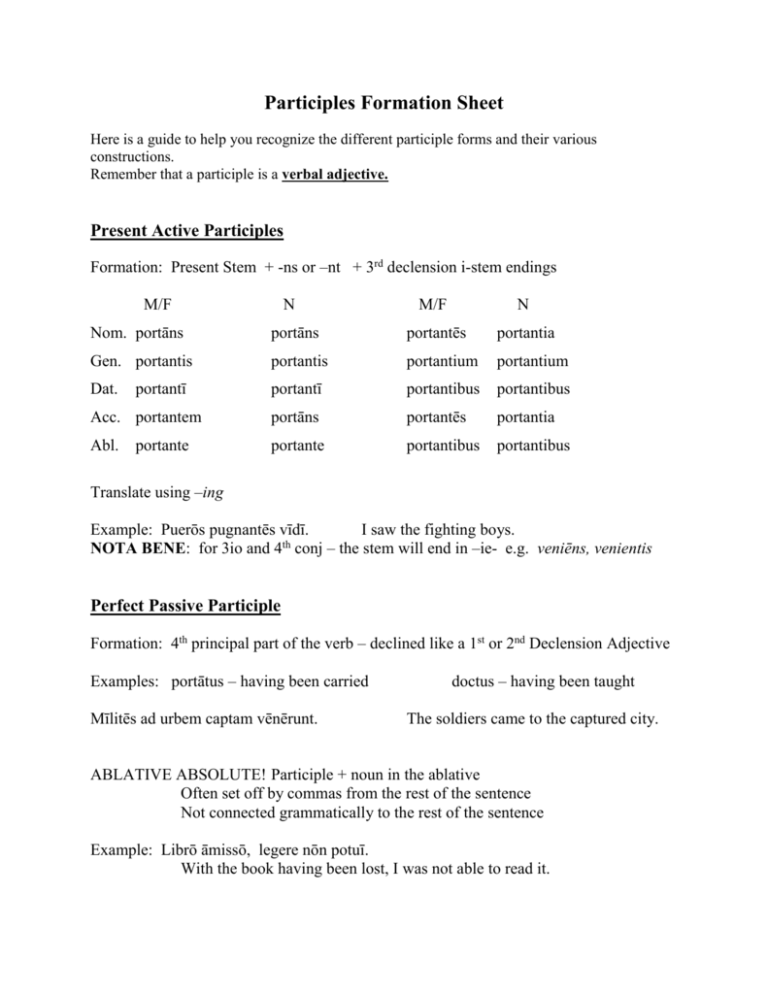
Participles Formation Sheet Here is a guide to help you recognize the different participle forms and their various constructions. Remember that a participle is a verbal adjective. Present Active Participles Formation: Present Stem + -ns or –nt + 3rd declension i-stem endings M/F N M/F N Nom. portāns portāns portantēs portantia Gen. portantis portantis portantium portantium portantī portantibus portantibus Acc. portantem portāns portantēs portantia Abl. portante portantibus portantibus Dat. portantī portante Translate using –ing Example: Puerōs pugnantēs vīdī. I saw the fighting boys. th NOTA BENE: for 3io and 4 conj – the stem will end in –ie- e.g. veniēns, venientis Perfect Passive Participle Formation: 4th principal part of the verb – declined like a 1st or 2nd Declension Adjective Examples: portātus – having been carried Mīlitēs ad urbem captam vēnērunt. doctus – having been taught The soldiers came to the captured city. ABLATIVE ABSOLUTE! Participle + noun in the ablative Often set off by commas from the rest of the sentence Not connected grammatically to the rest of the sentence Example: Librō āmissō, legere nōn potuī. With the book having been lost, I was not able to read it. Future Active Participles Formation: 4th principal part with –ūr inserted between the stem and the –us, a, um ending Translated: about to ________________; going to ____________________ Example: portātūrus – about to carry Most commonly used with a form of “sum” Erat pugnātūrus. Puellas librum lectūra est. He was about to fight. The girl is about to read the book.
